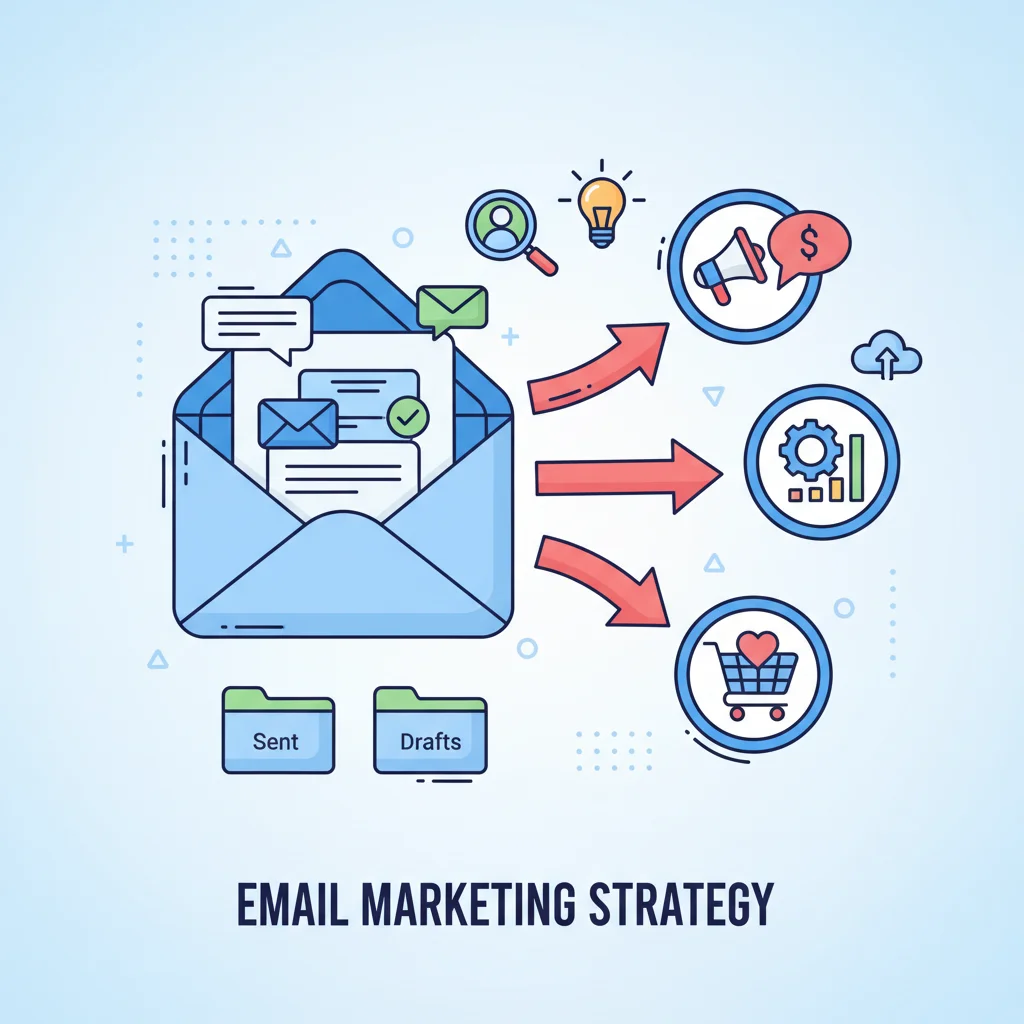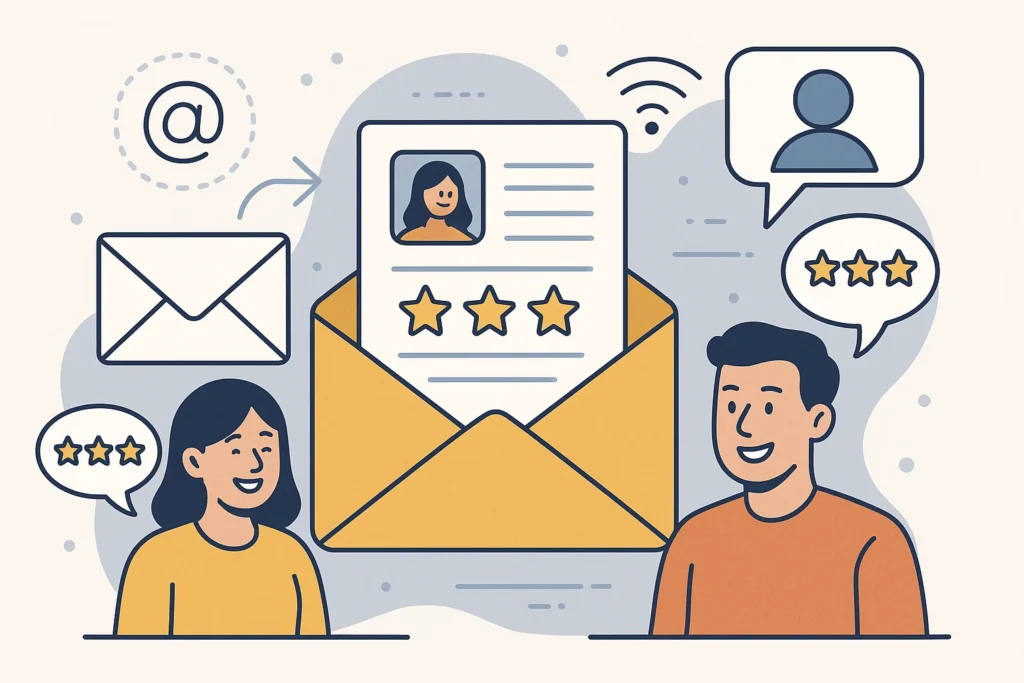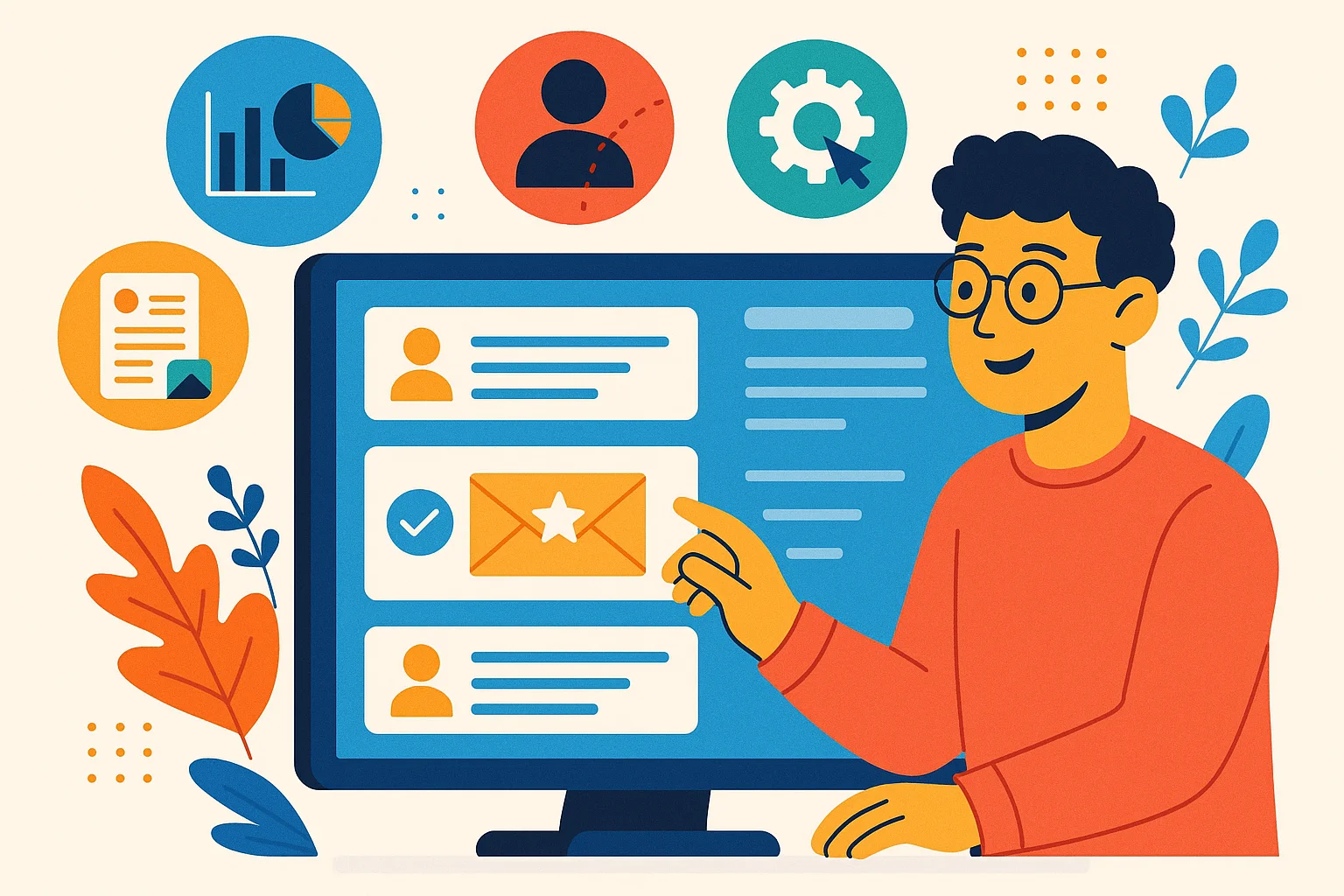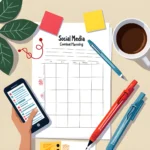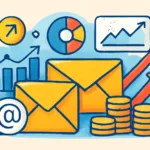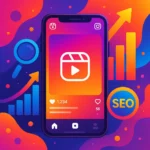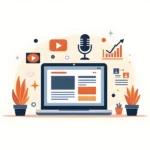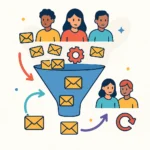Now Reading: Email Marketing For Seasonal Promotions Complete Guide
-
01
Email Marketing For Seasonal Promotions Complete Guide
Email Marketing For Seasonal Promotions Complete Guide
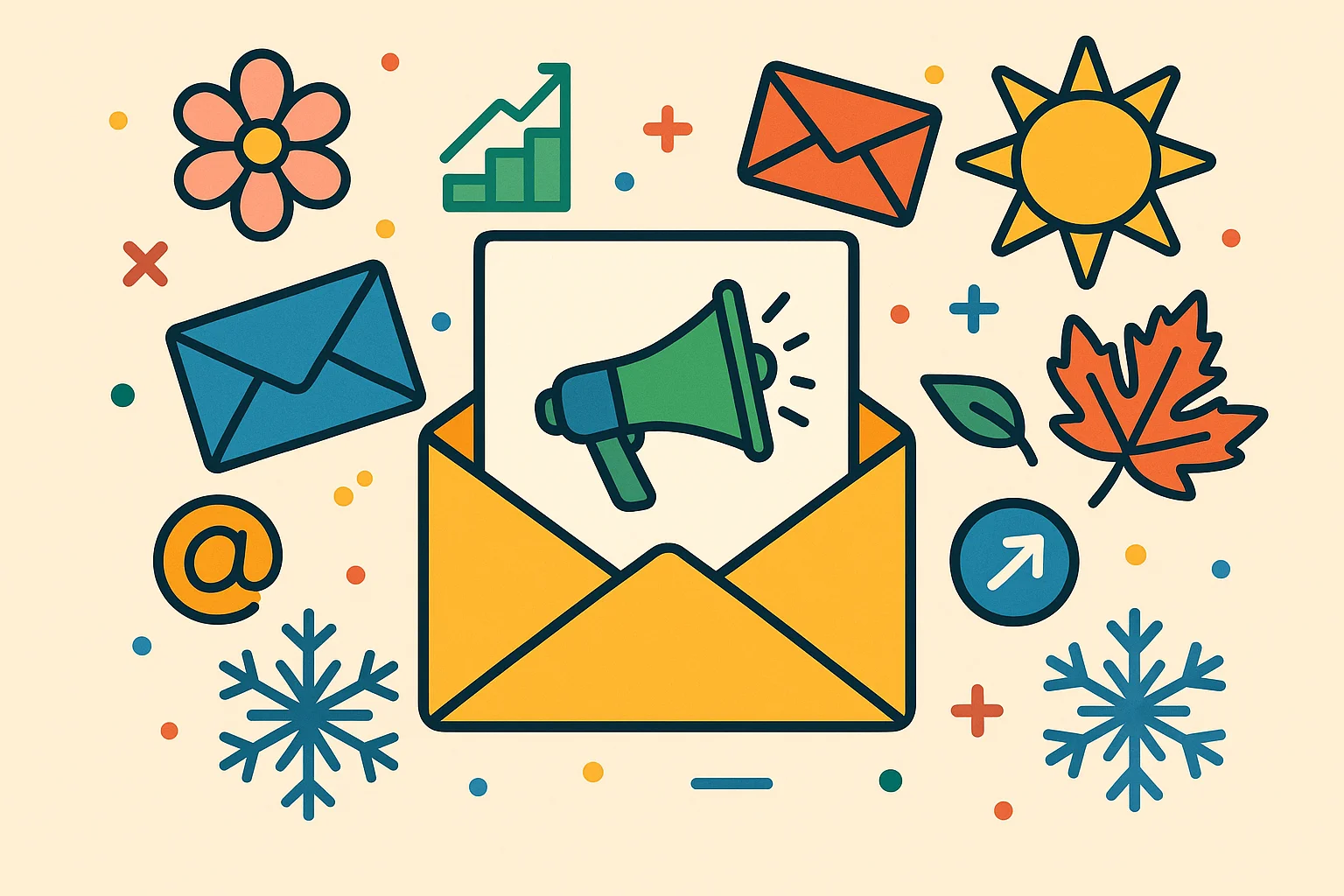
Picture this: You’ve spent weeks planning the perfect seasonal promotion, but your emails are getting lost in crowded holiday inboxes. Your open rates are tanking, and competitors are stealing your thunder. Sound familiar? That sinking feeling when your carefully crafted campaigns fall flat is something I’ve helped countless businesses overcome. Email marketing for seasonal promotions doesn’t have to be a shot in the dark – it can be your secret weapon for turning seasonal shoppers into loyal customers.
Key Takeaways
How to use email marketing for seasonal promotions:
- Plan ahead – Start seasonal campaigns 4-6 weeks before peak shopping periods to build anticipation and capture early shoppers
- Craft compelling subject lines – Use personalization, urgency, and seasonal keywords to boost open rates by up to 50%
- Segment your audience – Target different customer groups (loyal vs. new, past purchasers vs. browsers) with tailored seasonal offers
- Create urgency – Use limited-time offers, countdown timers, and exclusive access to drive immediate action
- Design for mobile – Ensure seasonal emails look great on smartphones since most holiday shopping happens on mobile devices
- Use seasonal keywords – Incorporate terms like “holiday,” “spring sale,” or “summer collection” for better deliverability and relevance
- Automate strategically – Set up triggered campaigns for abandoned carts, post-purchase follow-ups, and win-back sequences during peak seasons
Planning Your Seasonal Email Marketing Strategy
The biggest mistake I see businesses make? Waiting until the last minute to plan their seasonal campaigns. Successful email marketing for seasonal promotions starts months in advance, not days.
Understanding Seasonal Patterns
Different seasons trigger different buying behaviors. Spring brings renewal and fresh starts – perfect for home improvement, fitness, and fashion campaigns. Summer screams vacation, outdoor activities, and lifestyle changes. Fall means back-to-school preparation and cozy comfort purchases. Winter combines holiday gift-giving with year-end sales.
Your planning should align with these natural rhythms. Start by mapping out your entire year:
- January-February: New Year resolutions, Valentine’s Day
- March-May: Spring cleaning, Easter, Mother’s Day
- June-August: Summer vacation, Father’s Day, back-to-school prep
- September-November: Fall fashion, Halloween, Black Friday
- December: Holiday shopping, year-end clearance
Timing Your Campaigns
Here’s where most people mess up: they think seasonal marketing means sending emails during the season. Wrong. Email marketing for seasonal promotions works best when you get ahead of the curve.
For major holidays like Christmas, start your campaigns in early November. For back-to-school season, begin in mid-July. Spring campaigns should launch in late February. The rule of thumb? Start 4-6 weeks before your target shopping period.
This early start lets you:
- Build anticipation gradually
- Capture early shoppers who plan ahead
- Avoid the inbox chaos of peak season
- Test and optimize before competition heats up
Useful Articles:
Crafting Irresistible Seasonal Subject Lines
Your subject line is the gatekeeper to your entire campaign. Get it wrong, and even the most brilliant email content goes unread. Email marketing for seasonal promotions lives or dies by subject line performance.
Personalization That Works
Generic subject lines like “Holiday Sale Inside” are inbox poison. Instead, use data you already have:
Hi [Name], your fall favorites are 30% off today
[Name], we saved something special for your holiday list
Your summer wishlist items just went on sale, [Name]Personalized subject lines have 50% higher open rates, but don’t stop at names. Use purchase history, browsing behavior, or location data when possible.
Creating Urgency Without Being Pushy
Urgency works, but only when it feels genuine. Here are proven approaches:
Time-based urgency:
24 hours left: Spring sale ends tomorrow
Last call for holiday shipping
Weekend flash sale: 48 hours onlyInventory-based urgency:
Almost gone: Your cart items are selling fast
Limited stock alert for [Product Name]
Only 50 left in your sizeExclusive access urgency:
VIP early access: Holiday sale starts now
Members-only preview: Fall collection
Exclusive 24-hour head startSeasonal Keywords That Convert
Different seasons call for different language. Spring campaigns should feel fresh and energizing. Summer emails need that carefree, fun vibe. Fall content works best with cozy, preparation themes. Winter campaigns can be either festive or practical.
Spring keywords: fresh, new, bloom, renew, clean, bright, grow
Summer keywords: fun, adventure, escape, relax, sunny, beach, vacation
Fall keywords: cozy, warm, prepare, harvest, comfort, gather, crisp
Winter keywords: festive, gift, celebrate, sparkle, magic, tradition, save
Segmentation Strategies For Maximum Impact
Not all customers are created equal, especially during seasonal periods. Email marketing for seasonal promotions becomes exponentially more effective when you segment your audience properly.
Behavioral Segmentation
Past purchasers: These folks already trust you. They need different messaging than first-time visitors. Focus on new arrivals, exclusive access, or loyalty rewards.
Window shoppers: People who browse but haven’t bought need more convincing. Use social proof, reviews, and gentle nudges.
Seasonal buyers: Some customers only shop during sales periods. Hit them with your biggest, boldest offers.
Year-round customers: Your bread and butter. They appreciate early access and insider information.
Geographic Segmentation
Seasons hit different regions at different times. Your spring campaign might work perfectly in California but flop in Minnesota where it’s still snowing. Use location data to time your campaigns appropriately.
Purchase History Segmentation
Look at what people bought last year during the same season. Someone who bought winter coats last December might be interested in accessories this year. Use this data to create highly relevant product recommendations.
Useful Articles:
Email Templates That Drive Results
Let me share some proven templates that consistently perform well for seasonal campaigns.
Early Bird Announcement Template
Subject: Get ready... [Season] sale starts Monday
Hi [Name],
Something exciting is coming your way.
Our biggest [season] sale of the year starts Monday, and I wanted to give you a heads up.
Here's what to expect:
* Up to 60% off bestsellers
* Free shipping on everything
* Exclusive items not available anywhere else
Mark your calendar: Monday at 9 AM EST.
I'll send you the access link Sunday night so you can shop before everyone else.
Talk soon,
[Your name]
P.S. Last year's [season] sale sold out in 6 hours. Just saying.Flash Sale Template
Subject: ⚡ 4-hour flash sale starts NOW
[Name], this is it.
Our surprise [season] flash sale just went live, and it's only lasting 4 hours.
⏰ Sale ends at 11 PM tonight
🎯 40% off everything sitewide
🚚 Free 2-day shipping included
No code needed. Discounts applied automatically at checkout.
[SHOP THE FLASH SALE]
This is our biggest discount of the season, and honestly? I don't know when we'll do this again.
Happy shopping!
[Your name]Abandoned Cart Recovery Template
Subject: Still thinking about your [season] picks?
Hi [Name],
I noticed you left some great [season] items in your cart yesterday.
Good news: they're still available and still 25% off as part of our [season] sale.
[Product image]
[Product name] - $XX (was $XX)
[Product image]
[Product name] - $XX (was $XX)
[COMPLETE YOUR ORDER]
Quick heads up: this sale ends in 2 days, and I'd hate for you to miss out.
Need help deciding? Just reply to this email. I'm here to help.
Best,
[Your name]
P.S. Free shipping is included on orders over $75.Automation Sequences That Work
Email marketing for seasonal promotions becomes much more manageable when you set up smart automation sequences. These work in the background while you focus on strategy.
Pre-Season Warm-Up Sequence
Start this 6 weeks before your main seasonal push:
Week 1: Seasonal trend preview
Week 2: Behind-the-scenes content
Week 3: Early bird announcement
Week 4: Exclusive preview for subscribers
Week 5: Final preparation email
Week 6: Launch day
During-Season Nurture Sequence
Day 1: Welcome to the sale
Day 3: Best sellers update
Day 5: Limited time bonus offer
Day 7: Last chance reminder
Post-Season Follow-Up Sequence
Day 1: Thank you + order confirmation
Day 3: Shipping notification
Day 7: How are you enjoying your purchase?
Day 14: Related product recommendations
Day 30: Review request
Useful Articles:
Design Elements That Convert
Your seasonal emails need to look the part. Visual design can make or break your campaign performance.
Color Psychology For Seasons
Spring: Soft pastels, fresh greens, light blues
Summer: Bright yellows, ocean blues, coral pinks
Fall: Warm oranges, deep reds, golden yellows
Winter: Rich reds, forest greens, elegant golds
Mobile-First Design
Over 60% of emails are opened on mobile devices, and this number jumps even higher during holiday shopping seasons. Your seasonal campaigns must look perfect on smartphones.
Keep these mobile design principles in mind:
- Single column layouts work best
- Large, tappable buttons (minimum 44px)
- Readable font sizes (at least 14px)
- Compressed images that load quickly
- Clear hierarchy with plenty of white space
Seasonal Visual Elements
Don’t go overboard with seasonal graphics, but subtle touches help set the mood:
Spring: Fresh flowers, green leaves, sunshine
Summer: Beach scenes, sunglasses, vacation vibes
Fall: Autumn leaves, pumpkins, cozy textures
Winter: Snowflakes, pine trees, warm lighting
Advanced Tactics For Competitive Advantage
Once you’ve mastered the basics, these advanced strategies will set your email marketing for seasonal promotions apart from the competition.
Dynamic Content Personalization
Use dynamic content blocks to show different products, offers, or messaging based on subscriber data. Someone who bought winter coats last year sees outerwear recommendations, while someone who bought jewelry sees accessories.
Cross-Channel Integration
Your seasonal email campaigns shouldn’t exist in isolation. Coordinate with:
- Social media posts
- Website banners
- Paid advertising
- SMS campaigns
- Push notifications
Predictive Send Time Optimization
Most email platforms now offer send time optimization that uses machine learning to determine when each subscriber is most likely to open emails. This is especially valuable during busy seasonal periods when inbox competition is fierce.
Behavioral Trigger Campaigns
Set up campaigns triggered by specific behaviors:
- Browse abandonment (viewed products but didn’t add to cart)
- Category interest (spent time in specific product categories)
- Price drop alerts (for items on their wishlist)
- Back-in-stock notifications (for out-of-stock seasonal items)
Content Ideas That Engage
Beyond promotional emails, seasonal content can build relationships and drive engagement throughout the year.
Educational Content
Spring: Cleaning tips, organization guides, fresh start advice
Summer: Travel guides, outdoor activity ideas, vacation planning
Fall: Preparation checklists, cozy home tips, seasonal recipes
Winter: Gift guides, holiday entertaining, year-end planning
User-Generated Content
Encourage customers to share photos using your seasonal products. Create hashtags for each season and feature the best submissions in your emails.
Behind-the-Scenes Content
Show how your seasonal products are made, introduce your team, or share the story behind your seasonal collections. People love feeling connected to brands they support.
Deliverability Considerations
All your brilliant seasonal content means nothing if it doesn’t reach inboxes. Email marketing for seasonal promotions requires extra attention to deliverability.
List Hygiene
Clean your email list before major seasonal campaigns. Remove inactive subscribers, fix bounced addresses, and segment engaged vs. unengaged subscribers.
Sender Reputation
Your sender reputation affects whether your emails reach inboxes or spam folders. During high-volume seasonal periods, maintain consistent sending patterns and monitor your metrics closely.
Content Filtering
Avoid spam trigger words in subject lines and email content. Words like “FREE,” “URGENT,” and excessive exclamation points can hurt deliverability.
Testing And Optimization
The most successful seasonal campaigns are built on continuous testing and optimization.
A/B Testing Elements
Subject lines: Test different approaches like urgency vs. curiosity, personalization vs. generic, emoji vs. text-only
Send times: Test different days and times to find when your audience is most responsive
Content length: Some audiences prefer short, punchy emails while others engage with longer, detailed content
Call-to-action buttons: Test different colors, sizes, and text to optimize click-through rates
Multivariate Testing
Once you’ve mastered A/B testing, try multivariate tests that examine multiple elements simultaneously. This gives you deeper insights into how different components interact.
Performance Benchmarks
Track these key metrics for your seasonal campaigns:
- Open rates (aim for 20-25% or higher)
- Click-through rates (2-5% is typical)
- Conversion rates (varies by industry)
- Revenue per email
- List growth rate
- Unsubscribe rate
Email marketing for seasonal promotions isn’t just about sending more emails during busy shopping periods – it’s about creating strategic, well-timed campaigns that resonate with your audience when they’re most ready to buy. Start planning early, focus on personalization, and don’t forget to test everything. Your future self (and your revenue numbers) will thank you.


